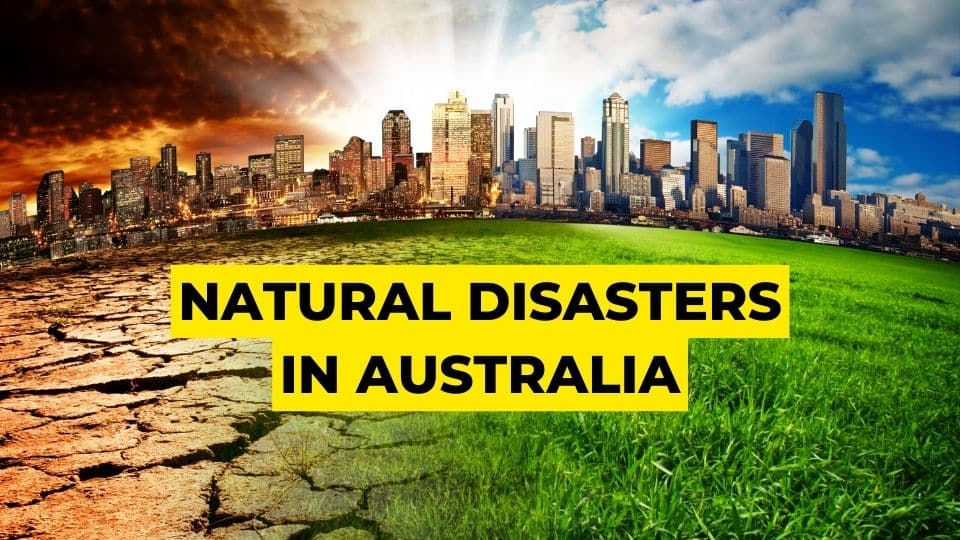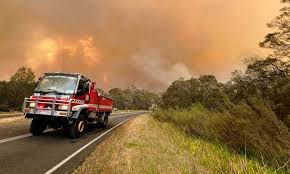Floods, Fires, Coastal Destruction & Economic Fallout: What’s Happening in Australia?
- Lucas Johnson

- Apr 3, 2025
- 2 min read

Australia has recently faced a series of severe natural disasters, including devastating floods, destructive coastal events, and significant bushfires, impacting various regions across the country.

Queensland's Devastating Floods
In March 2025, Queensland experienced unprecedented flooding due to ex-Tropical Cyclone Dianne, which brought torrential rains to already saturated areas. Every river in southwest Queensland reached major flood levels, leading to prolonged inundation. The agricultural sector suffered immensely, with over 150,000 livestock reported dead or missing. The destruction of approximately 7,000 kilometers of exclusion fencing further exacerbated the crisis. Premier David Crisafulli emphasized the need for substantial rebuilding efforts to restore infrastructure and support affected communities.
The town of Thargomindah witnessed the Bulloo River surpassing its 1974 flood levels, resulting in extensive property damage and displacement of residents. The Queensland government has initiated increased assistance grants and disaster funding to aid recovery efforts. However, officials warn that the recovery process will span months and possibly years, given the scale of devastation.

Coastal Damage in Sydney
Sydney's waterfront faced severe flooding and infrastructural damage due to a combination of large swells and a king tide. Bondi Beach experienced 18-foot swells, causing significant destruction to the Bondi Icebergs Swimming Club, including shattered windows and damaged interiors. Further south, Cronulla Beach suffered damage to its beachfront, pavements, and electrical infrastructure due to 13-foot waves. Authorities have issued warnings about ongoing hazardous surf conditions that could lead to further coastal erosion and damage.

Victoria's Severe Bushfires
In 2025, Victoria endured its worst fire season since the Black Summer of 2019-2020, with over 320,000 hectares burned. Major incidents occurred in Little Desert National Park and the Grampians, where unprecedented fire behavior was reported. Firefighters and local communities faced immense challenges in controlling the blazes. Looking ahead to 2026, experts anticipate another active fire season due to expected low rainfall during autumn and winter, emphasizing the need for significant rainfall to reduce flammability and mitigate risks.

Earthquake Tremors in Darwin
On April 1, 2025, a 5.7 magnitude earthquake struck the Banda Sea, with tremors felt in Darwin. The quake occurred at a depth of 128 km, approximately 400 km from Dili, Timor-Leste. Geoscience Australia received over 120 reports from residents who felt the tremors. This event follows a series of recent seismic activities in the region, highlighting the area's geological volatility.
The cumulative effect of these natural disasters has led to significant economic repercussions. Insurance losses from ex-Tropical Cyclone Alfred and the February North Queensland floods have exceeded $1.2 billion, with insurers receiving over 95,000 claims related to damages. The extensive losses underscore the profound financial impact on affected communities and the broader economy.
Australia's recent encounters with natural disasters have tested the resilience of its communities and infrastructure. The widespread flooding in Queensland, coastal damage in Sydney, severe bushfires in Victoria, and earthquake tremors in Darwin collectively highlight the nation's vulnerability to natural calamities. Coordinated recovery efforts, substantial financial support, and proactive disaster preparedness are essential to navigate the challenges posed by these events and to bolster resilience against future disasters.




Comments